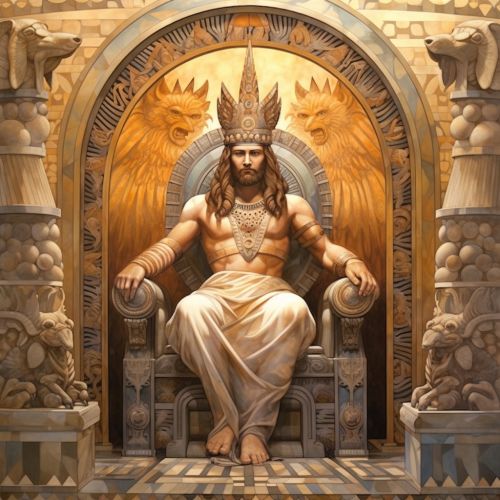Enki
Origins
Enki is a god in Sumerian mythology, later known as Ea in Akkadian and Babylonian mythology. He was originally patron god of the city of Eridu, but later the influence of his cult spread throughout Mesopotamia and to the Canaanites, Hittites and Hurrians among others.


Characteristics
Enki was associated with the southern band of constellations called stars of Ea, but also with the constellation AŠ-IKU, the Field (Square of Pegasus). Beginning around the second millennium BCE, he was sometimes referred to in writing by the numeric ideogram for "40," associated with his sacred number. The planet Mercury, associated with Babylonian Nabu (the son of Marduk) was in Sumerian times, identified with Enki.
Mythology
Several myths about Enki have been collected from various sites, stretching from Southern Iraq to the Levantine coast. He is mentioned in the earliest extant cuneiform inscriptions throughout the region and was prominent from the third millennium down to Hellenistic times.
Worship
The main temple to Enki was called E-abzu, meaning "abzu temple" (also E-en-gur-a, meaning "house of the subterranean waters"), a ziggurat temple surrounded by Euphratean marshlands near the ancient Persian Gulf coastline at Eridu. He was the keeper of the divine powers called Me, the gifts of civilization. His image is a double-helix snake, or the Caduceus, sometimes confused with the Rod of Asclepius used to symbolize medicine. He is often shown with the horned crown of divinity dressed in the skin of a carp.
